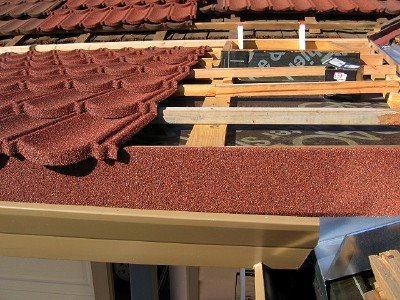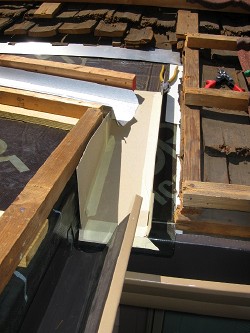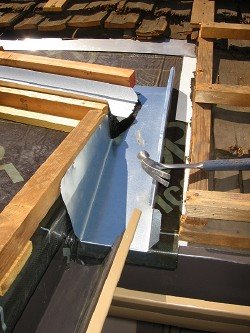
As briefly mentioned earlier, these are metal tiles. It's a unique proprietary roofing system by Decra. Very few roofing supply outlets carry it. I found some at the Burlingame branch of ABC Supply. Mine is the terra cotta style. They require 2x2 battens spaced 14.5" apart. I also got their fascia pieces (seen in photo foreground, covering the front edge).
Advantages of these tiles are:
- match existing roof (for me)
- looks like rich clay tile from a distance
- installation over existing requires no tear-off (if you're re-roofing)
- durability and a 50-year warranty when properly installed
Disadvantages are:
- easy to damage under foot (must walk ONLY on lip at 2x2's)
- labor intensive to modify when remodeling
- very few roofers truly know the product (some will always boast)
- challenging to flash at roof penetrations new or existing
- experienced professionals hate it for the above reasons





